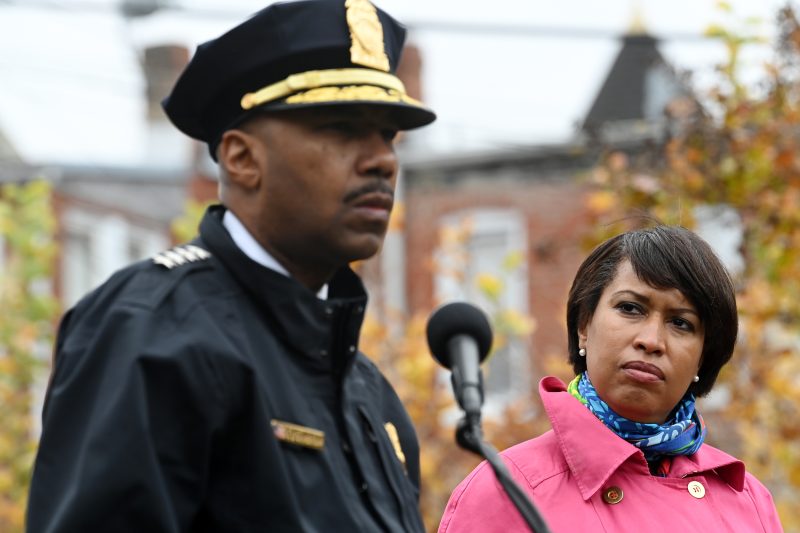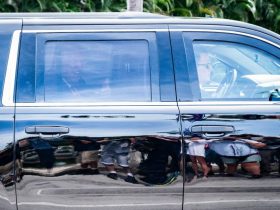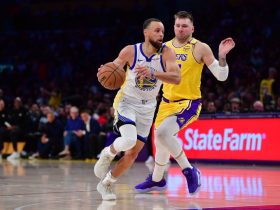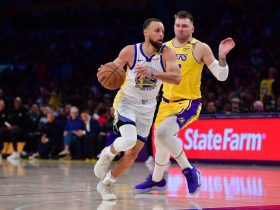The D.C. mayor told lawmakers investigating the Jan. 6, 2021, attack that Capitol Police were unprepared for the violent assault because of a mistaken belief that white supremacists would not harm them.
“People thought they were friendly to law enforcement and that they loved their country,” Mayor Muriel E. Bowser (D) said in her January 2022 interview with the House committee, a transcript of which was released Thursday. She said, however, earlier D.C. rallies of “white nationalist groups … showed us that they were antagonistic to law enforcement.”
In interviews with the House committee, Bowser and D.C. Police Chief Robert J. Contee III also faulted the Defense Department for not responding more quickly to the Capitol as rioters mobbed the building, while explaining their own reservations about deploying federal personnel on city streets. Bowser also described an attempt by President Donald Trump to take over the city’s police force in the summer of 2020, with some details emerging publicly for the first time with the release of her testimony.
The transcripts of Bowser and Contee’s interviews were part of the latest release of materials from the House Jan. 6 select committee, which this month issued their final report on the attack and recommended that Trump be charged with insurrection and obstruction of Congress.
Trump has blamed Bowser for the chaos on Jan. 6, saying she refused help from the National Guard. But Bowser and Contee said it made sense for the city to ask in advance of Jan. 6 only for unarmed Guard support to help with traffic and free up police for potential mayhem. Federal officers also have jurisdiction over the Capitol grounds, not D.C. police.
“It wasn’t for the Capitol. That is a separate request. It wasn’t for the White House. That is a separate request,” Contee said. “I don’t need military guys with long guns, you know, ushering people coming out of the Metro.”
Even that limited request from the District was met with what Contee described as “unusual” pushback from Army Secretary Ryan D. McCarthy. Unlike governors, the D.C. mayor cannot deploy National Guard troops on her own. McCarthy said the D.C. National Guard could not deploy east of Ninth Street NW — nine blocks from the Capitol — or be moved at all without explicit Army permission.
Contee called that restriction “odd” but said he assumed federal authorities would request National Guard support as needed and “pivot” in response to an emergency.
“My lesson learned, everybody does not pivot necessarily as quickly as the Metropolitan Police Department does,” he said.
National Guard troops requested by Capitol Police at 2:30 p.m. did not arrive at the building until three hours later. Steven Sund, the chief of Capitol Police at the time of the breach, told the committee his request in advance of Jan. 6 for National Guard support was denied.
By contrast, Contee said D.C. police were at the Capitol less than 20 minutes after being requested, even though the chief had not heard directly from Sund. Bowser said she later told McCarthy, who demanded an explicit Capitol Police request for troops, “Your Capitol is being overrun. I don’t have permission to be up there either, but MPD is there … they need help.”
When D.C. police got to the Capitol, Contee said, he was surprised and concerned to see a small and “scattered” Capitol Police force.
Tim Barber, a spokesman for the Capitol Police, directed an inquiry on Thursday to a statement the department had released to The Washington Post in the fall of 2021.
That statement said Capitol Police “expected and planned for violence from some protesters with ties to domestic terrorist organizations, but nobody in the law enforcement or intelligence communities imagined, on top of that threat, Americans who were not affiliated with those groups would cause the mayhem to metastasize to a volume uncontrollable for any single law enforcement agency.”
Yogananda D. Pittman, who led Capitol Police intelligence at the time of the riot and was later named acting chief after Sund resigned, told a congressional committee in February 2021 that there was “no evidence whatsoever” race played a role in planning for Jan. 6.
Both Bowser and Contee said, as was reported in the days after the attack, that the Army secretary was concerned about the “optics” of having “boots on the ground.” Bowser said she also thought there was concern within the Defense Department that Trump “would try to use the United States Army to storm the Capitol.”
McCarthy, whose interview was also released Thursday, told the committee he was concerned about “soldiers in plain view of a certification of election” when Trump supporters — including former administration official Michael Flynn — were calling for martial law.
They said Army officials suggested D.C. turn to federal officers for backup instead, an idea both Bowser and Contee rejected outright.
“A guy who is normally, you know, chasing career criminals, or whatever he is doing in his federal job that day, now armed with a long gun, going out into, you know, crowds of thousands of people” is “a recipe for disaster,” Contee said.
Unidentified staff from the Bureau of Prisons and other federal agencies had been deployed in D.C. during racial-justice protests the previous summer without any coordination. Federal police had forcefully cleared protesters from Lafayette Square in front of the White House on June 1, 2020, about 30 minutes before Trump walked through the area for a photo op. Trump had publicly complained that D.C. police and Bowser had lost control of the city, and The Washington Post reported that Trump had threatened to take over the 3,800-member D.C. police force to control the protests.
In her deposition, Bowser provided a more detailed and candid description of how that proposal was formed and played out over several tense hours. The mayor said the proposal to federalize D.C. police and the Secret Service clashed over the protests.
The mayor said she was told of the plan by White House Chief of Staff Mark Meadows, with White House counsel Pat Cipollone on the line.
“I’m telling them it would be a complete disaster; we’re going to lose the city,” Bowser said. “I was concerned that we would have a riot in the [District]. I mean, a real one. A real riot.” Bowser said Meadows’s “basic tenor was that this was going to happen; there was nothing I could do about it.”
Federal law allows the president to take control of D.C. police officers in certain emergency situations. But Bowser said city officials pushed back in what she described as a “heated conversation.” She said Trump officials told her that “they didn’t want protests outside the White House.”
Trump had expressed anger at officials in several states as protests turned turbulent but had little power over them.
“The president didn’t want any of these protests happening in any American city,” Bowser said. “And the place where he could stop it was D.C.”
The mayor said Trump’s bid “hearkens to an ugly segregationist past of the [District],” which only won limited home rule 50 years ago. “Everything balled up in this is bad for our democracy and is bad for our self governance.”
In the end, the Trump administration did not follow through on its threats. Bowser later credited Attorney General William P. Barr for “leading the charge against some pretty outrageous conduct,” and said the fact that he had left the White House by Jan. 6 was “problematic,” even though he was involved in the 2020 protest response she criticized.
The mayor said she never actually spoke to Trump herself: “I believe we had a president who talked via Twitter, and that’s how we talked to him.”
Bowser and Contee both said they were prepared for a large and unruly protest on Jan. 6, 2021. The director of D.C.’s Homeland Security and Emergency Management Agency had alerted them on Dec. 30 that some Trump supporters wanted to “storm the Capitol and occupy the building to halt the vote.”
But both said that instead of memos passed around within agencies, there should have been a meeting of relevant officials making clear that organized, violent extremists planned to descend on the Capitol, as described in a memo from the Norfolk FBI office on Jan. 5.
“I don’t think I want to get notified about Armageddon through an email,” Contee said.








